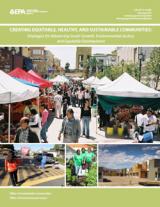Smart Growth and Equitable Development
On this page:
Background
Note: This page focuses on the intersection of smart growth, environmental justice, and equitable development. More comprehensive information on environmental justice is available on EPA's environmental justice page.
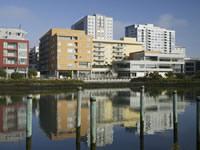
Smart growth approaches to development can help address long-standing environmental, health, and economic disparities in low-income, minority, and tribal communities. These communities face an array of challenges, including proximity to polluting facilities, barriers to participating in decision-making processes, disproportionate levels of chronic disease, neighborhood disinvestment, and poor or no access to jobs and services. Many of these challenges are related to how communities and regions are planned and built.
Smart growth approaches support:
- Cleaning up and reinvesting in existing neighborhoods.
- Providing housing choices for people of all income levels, household sizes, and stages of life.
- Offering transportation options that are affordable, reduce air pollution and associated health impacts, and give residents who do not drive more mobility.
- Improving access to jobs and services by creating development that is walkable and transit-accessible.
Low-income, minority, tribal, and overburdened communities across the country are using these strategies, along with environmental justice and equitable development approaches, to design and build healthy, sustainable, and inclusive neighborhoods.
EPA defines environmental justice as "the fair treatment and meaningful involvement of all people regardless of race, color, national origin, or income with respect to the development, implementation, and enforcement of environmental laws, regulations, and policies."
“Fair treatment” means that no group of people should bear a disproportionate share of the negative environmental consequences resulting from industrial, governmental, or commercial operations and policies. EPA and environmental justice organizations have expanded the concept of fair treatment to consider not only how burdens are distributed, but also how environmental and health benefits are shared. In other words, all people, regardless of race, ethnicity, or economic status, should have the opportunity to enjoy the positive outcomes of environmentally related decisions and actions, such as cleaner air and water, improved health, and economic vitality.
"Meaningful involvement” means that the public should have opportunities to participate in decisions that could affect their environment and their health, their contributions should be taken into account by regulatory agencies, and decision-makers should seek and facilitate the engagement of those potentially affected by their decisions.
Equitable development draws on both environmental justice and smart growth and generally refers to a range of approaches for creating communities and regions where residents of all incomes, races, and ethnicities participate in and benefit from decisions that shape the places where they live.
- Equitable development emphasizes that all residents should be protected from environmental hazards and enjoy access to environmental, health, economic, and social necessities such as clean air and water, adequate infrastructure, and job opportunities.
- To achieve this, equitable development approaches usually integrate people-focused strategies (efforts that support community residents) with place-focused strategies (efforts that stabilize and improve the neighborhood environment).
- Equitable development typically calls for a regional perspective to reduce health and economic inequalities among localities and improve outcomes for low-income communities while building healthy metropolitan regions.
EPA Resources
General Resources
- EJSCREEN: An environmental justice mapping and screening tool that provides a nationally consistent dataset and approach for combining environmental and demographic indicators. Users choose a geographic area; the tool then provides demographic and environmental information for that area.
- Energy Efficiency and Renewable Energy in Low-Income Communities: A Guide to EPA Programs (2016): Helps state and local staff connect with EPA initiatives that can help them expand or develop their own energy efficiency, renewable energy, and climate initiatives in ways that benefit low-income communities. Low-income community leaders and stakeholder groups can also use the guide to better understand the benefits of participating in EPA initiatives to help community members save energy costs, improve the health and safety of their homes, and protect the environment.
- Attracting Infill Development in Distressed Communities: 30 Strategies (2015): Helps communities determine their readiness to pursue infill development and identify strategies to better position themselves to attract infill development.
- Creating Equitable, Healthy, and Sustainable Communities: Strategies for Advancing Smart Growth, Environmental Justice, and Equitable Development (2013): Discusses land use and community design strategies that community-based organizations, local and regional decision-makers, developers, and other stakeholders can use to build healthy, sustainable, and inclusive neighborhoods.
- Unintended Impacts of Redevelopment and Revitalization Efforts in Five Environmental Justice Communities (PDF)(40 pp, 247 K, About PDF) (2006): Contains recommendations on avoiding the displacement that can follow successful brownfields cleanup and redevelopment.
- Affordable Housing and Smart Growth: Making the Connection (2001): Provides background information on the intersection of smart growth and affordable housing and uses case studies to illustrate strategies that can create more affordable housing in communities.
- The Model Plan for Public Participation (PDF)(20 pp, 350 K, About PDF) (2000): Describes guiding principles and critical elements of conducting public participation, as well as a checklist for environmental justice public participation.
- Partnership for Sustainable Communities: Through the Partnership, the U.S. Department of Housing and Urban Development (HUD), U.S. Department of Transportation (DOT), and EPA work together to align investments and coordinate policies to help communities improve access to affordable housing, increase transportation options, and lower transportation costs while protecting the environment.
- Supporting Environmental Justice and Equitable Development (2010): Describes the Partnership for Sustainable Communities' efforts to support environmental justice and equitable development.
- Cleanups: What You Can Do: Links to resources that can help residents and communities get involved in cleanups of contaminated sites.
- Office of Environmental Justice: EPA’s Office of Environmental Justice facilitates the Agency’s efforts to protect the environment and public health in minority, low-income, tribal, and other vulnerable communities by integrating environmental justice in all programs, policies, and activities.
- Resources for Creating Healthy, Sustainable, and Equitable Communities: Links to resources on federal initiatives that can help communities.
- Gullah Geechee Cultural Heritage Corridor Management Plan Exit(2013): Develops an integrated approach to protect, interpret, and enhance the natural, scenic, cultural, historic, and recreational resources within a national heritage area that could be affected by increasing coastal development pressure.
- EJ 2020 Action Agenda Framework: Roadmap to help EPA integrate environmental justice into its programs, policies, and activities.
- Environmental Justice in Action Blog
This blog discusses actions and ideas that communities and individuals are using to advance environmental justice. Several posts (e.g., Creating a Green Urban Oasis, Dr. King's Dream and Environmental Justice, Strong Leaders Matter, Are You Getting the Basic Amenities Your Taxes Paid for, and A Breath of Fresh Air After 35 Years) address smart growth issues. - Addressing Environmental Justice in EPA Brownfields Communities (2009): Brochure discussing the work of EPA’s Brownfields Program to promote environmental justice.
- Equitable Development: Untangling the Web of Urban Development through Collaborative Problem Solving (PDF) Exit(50 pp, 3.4 MB, About PDF) (2009): Article noting that the objectives of urban redevelopment and meeting the needs of underserved communities are not mutually exclusive, and explaining how communities are addressing both goals through strategies for equitable development.
- 'brownfields at-a-glance', Paseo YMCA Cleanup Preserving History (PDF) (1 pp, 73 K, About PDF) (2006): Fact sheet describing how EPA funding has been used to clean up a historic landmark in Kansas City’s 18th and Vine Jazz District.
- New Partners for Smart Growth Conference Exit: Annual conference, cosponsored by EPA, that focuses on building safe, healthy, equitable, and prosperous communities. The conference features a one-day equitable development workshop on the intersection between smart growth and environmental justice issues.
Technical Assistance Reports
EPA's Office of Sustainable Communities conducts technical assistance projects through the Smart Growth Implementation Assistance, Greening America’s Communities (formerly Greening America's Capitals), Building Blocks for Sustainable Communities, and Local Foods, Local Places programs, as well as ad hoc assistance, to help tribes, states, regions, and communities find solutions to development-related challenges. Some projects that have paid particular attention to equitable development issues include:
- Saginaw, Michigan (2014): In this Smart Growth Implementation Assistance project, EPA worked with Saginaw to identify options for developing a land use and infrastructure strategy that stabilizes neighborhoods through the sustainable reuse of abandoned properties, supports redevelopment of abandoned properties as green infrastructure, and creates opportunities for long-term economic growth. The report provides information useful to any community seeking to return vacant and abandoned properties to productive use.
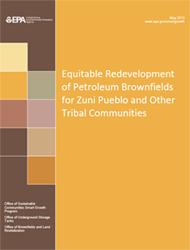 Equitable Redevelopment of Petroleum Brownfields for Zuni Pueblo and Other Tribal Communities (2013): EPA worked with the Zuni Environmental Protection Program to develop a step-by-step guide to redeveloping petroleum brownfields sites. The guide focuses on three sites on Zuni Pueblo in New Mexico but provides information useful to tribes nationwide.
Equitable Redevelopment of Petroleum Brownfields for Zuni Pueblo and Other Tribal Communities (2013): EPA worked with the Zuni Environmental Protection Program to develop a step-by-step guide to redeveloping petroleum brownfields sites. The guide focuses on three sites on Zuni Pueblo in New Mexico but provides information useful to tribes nationwide.- Montgomery, Alabama (2012): This Greening America's Capitals project developed design options for a segment of the Selma to Montgomery National Historic Trail as it runs through a historic, diverse neighborhood. The design options would also improve the lives of the residents along the trail by providing sidewalks, bicycle paths, street lighting, and trees.
- Lincoln, Nebraska (2011): This Greening America's Capitals project created design concepts to improve pedestrian and bicyclist safety and incorporate green infrastructure to manage stormwater runoff in the South Capitol neighborhood. The neighborhood is home to many lower-income residents and has not seen much public investment in recent years.
- Washington, D.C. (2011): This Greening America's Capitals project developed redesign options for an area near the Anacostia Metro station. The neighborhood is primarily African-American, and the area around the station is home to several schools and churches. The design options focused on improving pedestrian access to the station and included improved crosswalks and signage and green infrastructure features to collect stormwater.
- Las Cruces, New Mexico (2011): This Smart Growth Implementation Assistance project developed strategies to improve public engagement in community planning and design processes, focusing on ethnically diverse, low-income populations and others who have traditionally had limited involvement in decision-making.
- Hartford, Connecticut (2010): This Greening America's Capitals project created design options for redesigning a mile-long portion of Capitol Avenue to better connect lower-income residents of the Frog Hollow neighborhood with the state capitol grounds and a proposed bus rapid transit center. Green streets designs were developed to help manage stormwater, improve pedestrian safety and comfort, and encourage revitalization.
- Capitol Region Council of Governments, Connecticut (2009): Through Smart Growth Implementation Assistance, EPA helped CRCOG develop guidance for communities to site, plan, and develop affordable housing that incorporates smart growth approaches and green building techniques.
- Atlanta Regional Commission, Georgia (2009): This Smart Growth Implementation Assistance project helped the ARC develop a land use strategy that accommodates the needs of older adults, including compact, walkable neighborhoods where seniors can live near services and social opportunities in existing communities.
- Pamlico County, North Carolina (2006): This Smart Growth Implementation Assistance for Coastal Communities project helped rural Pamlico County develop a community vision for managing a state highway corridor while protecting the county's character.
National Award for Smart Growth Achievement
While many of the National Award for Smart Growth Achievement winners include equitable development strategies such as widespread public involvement, affordable housing, and transportation choices, the winners below focused particularly on low-income and underserved communities.
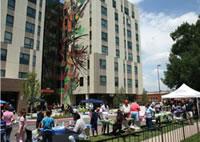
- Mariposa District - Denver, Colorado (2012): The Mariposa District, in Denver's historic and diverse La Alma/Lincoln Park neighborhood, is redeveloping an underinvested area into a vibrant, mixed-use community close to schools, jobs, and a light-rail station. Extensive community engagement and a Health Impact Assessment ensured that the development features green building and green infrastructure elements that protect the environment and residents' health. Video Exit
- Northwest Gardens - Fort Lauderdale, Florida (2012 Honorable Mention): The Northwest Gardens development offers residents more affordable homes and new opportunities. The community is becoming a model for economic, environmental, and social sustainability with job training and education programs, a 7,000-square-foot urban farm managed by residents, and more than 550 LEED-certified, high-quality, affordable homes.
- Bay Area Transit - Oriented Affordable Housing Fund - San Francisco Bay Area, California (2012 Honorable Mention): This $50 million revolving fund provides loans for investments in affordable, transit-accessible housing options in an area struggling with high housing costs. Video Exit
- Old North St. Louis Revitalization Initiative - St. Louis, Missouri (2011): A locally driven redevelopment strategy transformed Old North, a historic St. Louis neighborhood, from a largely abandoned area into a flourishing community. Old North now offers a range of housing options and amenities such as a farmers' market, a neighborhood grocery co-op, a history trail, and new sidewalks. Video Exit
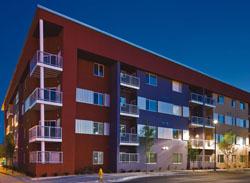
- Silver Gardens - Albuquerque, New Mexico (2011): Silver Gardens Apartments is a 66-unit affordable housing development located on a reclaimed brownfield site in downtown Albuquerque. Situated across the street from the city's primary transit hub, Silver Gardens is the Southwest's first LEED Platinum-certified affordable housing development and the first affordable housing project in the nation to sell carbon offsets. Video Exit
- Smart.Growth@NYC: Policies and Programs for Improving Livability - New York City (2010): Smart.Growth@NYC includes four initiatives: a Street Design Manual that encourages transit access and bicycle use and enhances public spaces, Active Design Guidelines that encourage physical activity and healthier living, a Bicycle Parking Amendment that encourages biking by providing more bicycle parking, and the Food Retail Expansion to Support Health program that makes it easier for grocery stores to locate in underserved areas with low rates of car ownership and high rates of poverty and diet-related diseases like obesity and diabetes. Video Exit
- Parkside of Old Town - Chicago, IL (2009): Parkside of Old Town, a HUD Hope VI development, replaced a failed housing project with a mixed-use, socioeconomically diverse neighborhood. Inside the neighborhood, rental, market-rate, and affordable housing units are indistinguishable, fostering a cohesive community, and safe and attractive parks, play areas, and community facilities meet the needs of residents. Video Exit
- Egleston Crossing - Roxbury, Massachusetts (2008): Egleston Crossing helped renew a disinvested corridor in Boston's Roxbury and Jamaica Plain neighborhoods with two new buildings, built on cleaned-up, formerly underused parcels, that provide much-needed affordable housing, including apartments reserved for disabled and formerly homeless individuals. The buildings' energy-efficient design and materials, combined with their proximity to public transit, use less energy, reduce greenhouse gas emissions, and save residents money.
- Mission Creek Senior Community - San Francisco, California (2008): Mission Creek transformed a brownfield into an attractive, mixed-use, low-income senior community. The energy-efficient apartments are built to be accessible to everyone, including the disabled and ill. The project includes 139 affordable apartments for low-income elderly residents.
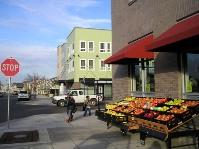
- New Columbia - Portland, Oregon (2007): The Housing Authority of Portland worked with public and private stakeholders to redevelop an isolated and distressed public housing site into New Columbia. The new development offers more homes, including low-income rentals and market-rate single-family homes. A Community Advisory Committee conducted design workshops that gathered residents' advice on all aspects of the project. New Columbia improves on the environmental performance of the old development, and all residents are within a five-minute walk of public transportation. New Columbia remains one of Portland's most diverse neighborhoods.
- Abyssinian Neighborhood Project - Borough of Manhattan, Harlem, New York (2007): The Abyssinian Development Corporation worked with many partners to develop a strategy to expand housing and commercial options for central Harlem. This project created commercial space for local businesses, established educational facilities and workforce training programs, cleaned up abandoned buildings and vacant lots, and helped to create and support block associations and a neighborhood leadership group.
- High Point - Seattle, Washington (2007): The Seattle Housing Authority worked closely with community members to rebuild a hilltop neighborhood struggling with crime and disinvestment as a mixed-use, mixed-income, and environmentally sensitive community. Using green building principles, High Point's more than 1,700 new units are expected to consume less water, electricity, and natural gas than the old community's 716 units.
- Bethel Center - Chicago, Illinois (2006): Threatened with the loss of its transit station, the West Garfield Park neighborhood catalyzed transit-oriented redevelopment with Bethel Center as the anchor and kept the station open. Bethel Center provides employment services, child care, and banking in a green building erected on a former brownfield.

- Pennsylvania Fresh Food Financing Initiative - Commonwealth of Pennsylvania (2006): This initiative, a public-private partnership between the state and three nonprofit organizations, has provided over $7.3 million in grants and loans to help supermarkets locate in underserved communities. The program lets people shop for nutritious food in their neighborhoods instead of having to drive to distant grocery stores and brings economic development to lower-income communities.
- San Juan Pueblo Master Plan - San Juan Pueblo, New Mexico (2004): The San Juan Pueblo, now known as Ohkay Owingeh, has been inhabited for over 700 years. A community planning process created the pueblo's Master Land Use Plan, the first tribal smart growth plan in the country. It provides a long-term growth strategy, coordinates existing infrastructure with housing and commercial development, preserves the walkable historic plazas, and includes design guidelines that preserve the pueblo's heritage.
- Moore Square Museums - Raleigh, North Carolina (2003): The Moore Square Museums Magnet Middle School, in the heart of Raleigh's cultural and arts district, draws on the downtown's cultural institutions to provide students with a unique educational opportunity. The school, located where several blighted and vacant structures once stood and within walking distance of diverse neighborhoods, has helped strengthen and revitalize the surrounding area.
Other Resources
The following links exit the site Exit
- Choosing Our Community's Future: A Citizen's Guide to Getting the Most Out of New Development, Smart Growth America (undated): Focuses on the visioning and planning efforts that set the stage for smarter growth and provides tips for citizens who want to shape development in their communities.
- Connecting Smart Growth and Brownfields Redevelopment (PDF) (24 pp, 725 K, About PDF), Center for Environmental Policy and Management, University of Louisville (2006): Examines planning strategies, financing options, and institutional practices that can help promote brownfield redevelopment. Funded by a grant from EPA.
- Healthy, Equitable Transportation Policy: Recommendations and Research, Prevention Institute and PolicyLink (2009): Examines how transportation policy can help create sustainable, healthy, and equitable communities.
- Mixed-Income Transit-Oriented Development Action Guide, Reconnecting America and the Center for Transit-Oriented Development: Tool to identify the most appropriate and effective strategies for achieving mixed-income transit-oriented development.
- Place Matters Toolkit: Suggests ways for residents to identify, promote, and protect the places they care about.
- Equity Tools, PolicyLink: Provides descriptions, benefits, implementation recommendations, potential challenges, possible funding sources, and case studies for tools that can help create vibrant and healthy neighborhoods, prevent displacement, and promote equitable revitalization.
- Regional Equity and Smart Growth: Opportunities for Advancing Social and Economic Justice in America (PDF) (24 pp, 351 K, About PDF), Funders Network for Smart Growth and Livable Communities (2004): Describes the concept of regional equity, illustrates its use by diverse groups across the country, and presents a framework for advancing it.

